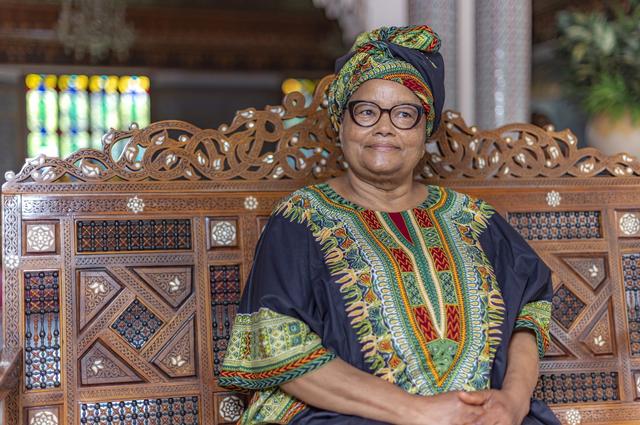[Series] Indigo, a color and much more (1/4)
"Natural dyes" (1/4) - This plant substance with intense blue dresses clothing and contemporary interiors.But its origin dates back to the dawn of time and its function is not strictly decorative.
"I prefer to talk about a substance rather than a color," says artist Aboubakar Fofana, Indigo Master for almost forty years.Indigotier makes it possible to obtain an intense blue color chart, but this green plant native to the tropical regions of Asia and Africa first has medicinal virtues.“The leaves are recognized for their antiseptic and anti-inflammatory properties.They can be consumed in infusion or applied directly to a gaping wound, ”he recalls.
Ecological disaster
His knowledge of vegetable gross matter is not trivial.The Malian visual artist and textiles, who exhibited in France, in Mali and Japan, has preserved natural dyeing methods his spearhead."Today in Mali, you will not see a single craftsman working indigo in an organic way, without cheating or chemical," he storms.It is an ecological and health disaster.Indigo is an overused word!»»
Present in the trendy pages of interior decoration magazines as well as fashion, this color would draw its origins from Egyptian antiquity."We find this dye on the mummies strips in their residences," says the craftsman.Proof that indigo has continued.But what we see mainly today is a synthetic coloring, "insists the one who campaigns for the creation of a quality and excellence label allowing to differentiate the true from the false.
Seven to twelve shades of blue
![[Série] L’indigo, une couleur et bien plus encore (1/4) [Série] L’indigo, une couleur et bien plus encore (1/4)](https://website-google-hk.oss-cn-hongkong.aliyuncs.com/drawing/article_results_6/2022/3/1/022e8be70e69538712948472da3da1f8.jpeg)
Mastering natural indigo is based on a biochemical technique and would require seven to ten years of learning."This is a bacterial tank coloring, that is to say that indigo leaves ferment and form a breeding of living organisms that evolve in an alkaline liquid," explains the specialist.
The method is based on air oxidation - the dyed fabric is then dried in the sun - and makes it possible to obtain seven to twelve shades of blue.The dye is applied to mainly imported cotton, to the chagrin of Aboubakar Fofana, who prefers to grow organic cotton locally.
Traditionally, the textile is then woven from narrow bands on horizontal trades specific to the Sahelian zone, according to the finish method ("flexible fabric", in Bambara).
Fonction anti-UV
Indigo has seduced different West African cultural groups, including Soninkes, one of the first peoples to have disseminated it on the continent."The legend wants us to believe that the Tuaregs are the ambassadors, but the blue men of the desert have never practiced this technique.If they wear indigo drops, it is simply because this color has an anti-UV function, it protects them from the sun, "recalls Aboubakar Fofoana.
This textile tradition is representative of the Dogon country, where an old adage says that "a man who does not wear clothes is a wordless man", illustrates Koudiedji Sylla, creator of the Indigo Sarakule clothing brand.It was in the Bandiagara caves that archaeological textiles were found.Some of them would date from the 11th and 12th centuries."On these textiles such, we noted the presence of reasons made at Indigo.Teints as fresh as if they had been done yesterday, "said Aboubakar Fofana.
Un symbole de protection
The specificity of indigo tissues is based on the drawings that dress it, mainly obtained using the knotting technique.These reasons would today have a strictly decorative function."We can guess cauris on certain fabrics," comments Koudiedji Sylla."The reserve technique by ligature makes it possible to obtain forms reminiscent of root pods or braids," adds Aboubakar Fofana.
It is above all blue that takes on a particular symbolism.In African cosmogonies, this shade is a protection symbol."Newborns are often wrapped in an indigo textile, a celestial color that makes the link between humans and the divine.But this fabric also has a political dimension, indigo being one of the foodstuffs that has brought the most wealth to slave traders, with cotton and tobacco.The history of indigo has a dark part, since it contributed to the deportation of Africans during the slave trade, "would recall the activist.








